

Hurricanes, typhoons and cyclones pose significant global threats to life and property, including storm surges, flooding, extreme winds and tornadoes. Additionally, rainfall rates and cyclone intensities are projected to increase.
An above-average hurricane season was forecasted for 2022. Scientists at Colorado State University estimated there would be at least 19 named storms and nine hurricanes.
Ultimately, the 2022 season was near-normal. Phil Klotzbach, senior research scientist at Colorado State University’s Department of Atmospheric Sciences, described the 2022 season as “the most abnormal, normal hurricane season on record.”
(Photo: Damage in Fort Myers Beach, Florida after Hurricane Ian. Credit: Lee County Sheriff’s Office via @JulieMartinTV Twitter)
August was unusually calm and followed by a series of intense storms. From July 3 to the end of August, there was no named storm activity in the Atlantic, the first time that had happened since 1941. The 2022 season ended with 14 named tropical systems, including eight hurricanes, with two major hurricanes (Fiona and Ian).
Hurricanes are listed in reverse alphabetical order, with the exception of the major impacts, which appear at the top of the list.
Latest Updates

Announcing $2.12 million to support recovery from hurricanes, wildfires, tornadoes and more
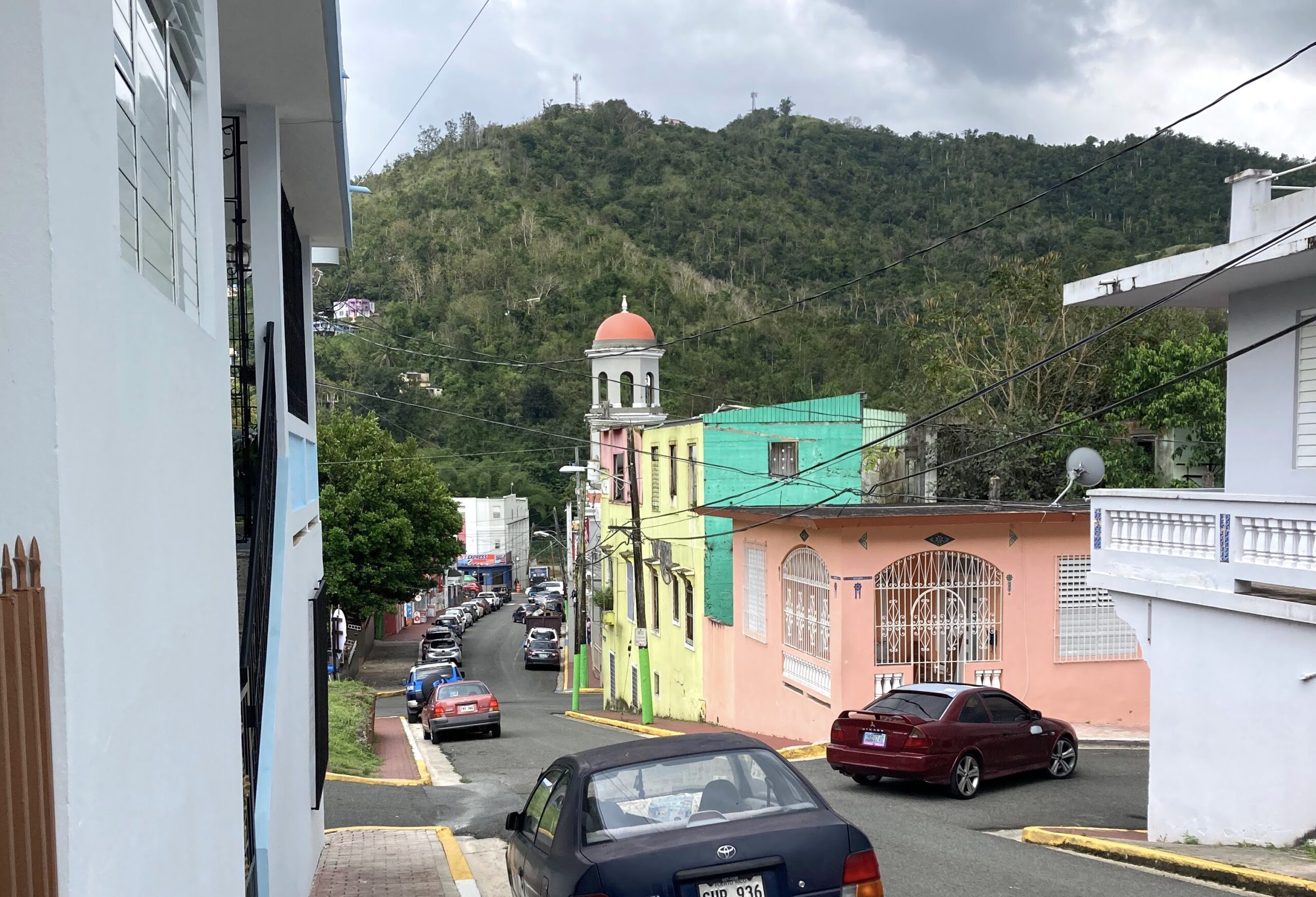
Disaster preparedness in Puerto Rico: Lessons from shoe-leather philanthropy
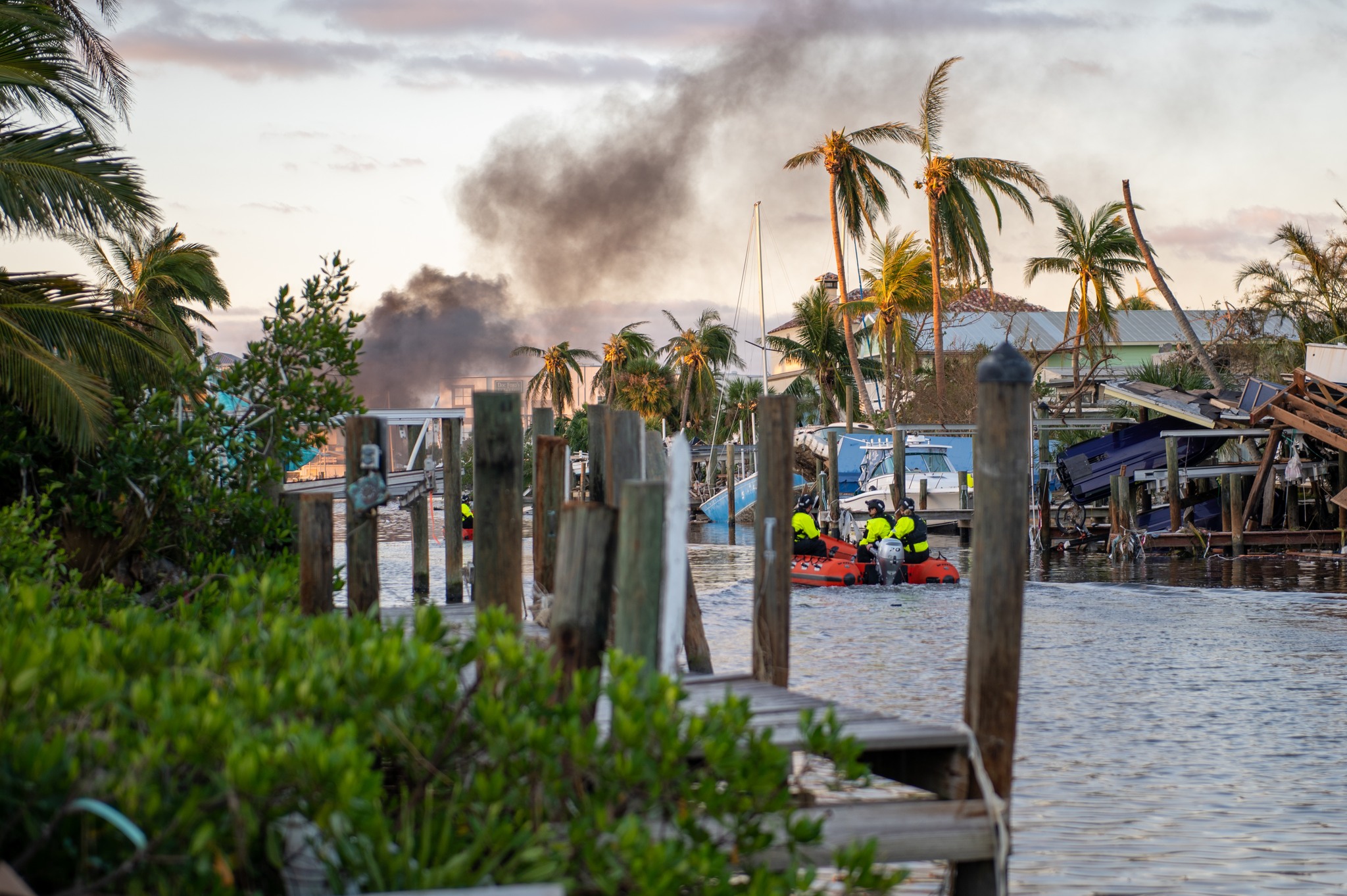
CDP announces nearly $2.5 million in Atlantic Hurricane Season Recovery Fund grants as National Hurricane Preparedness Week begins
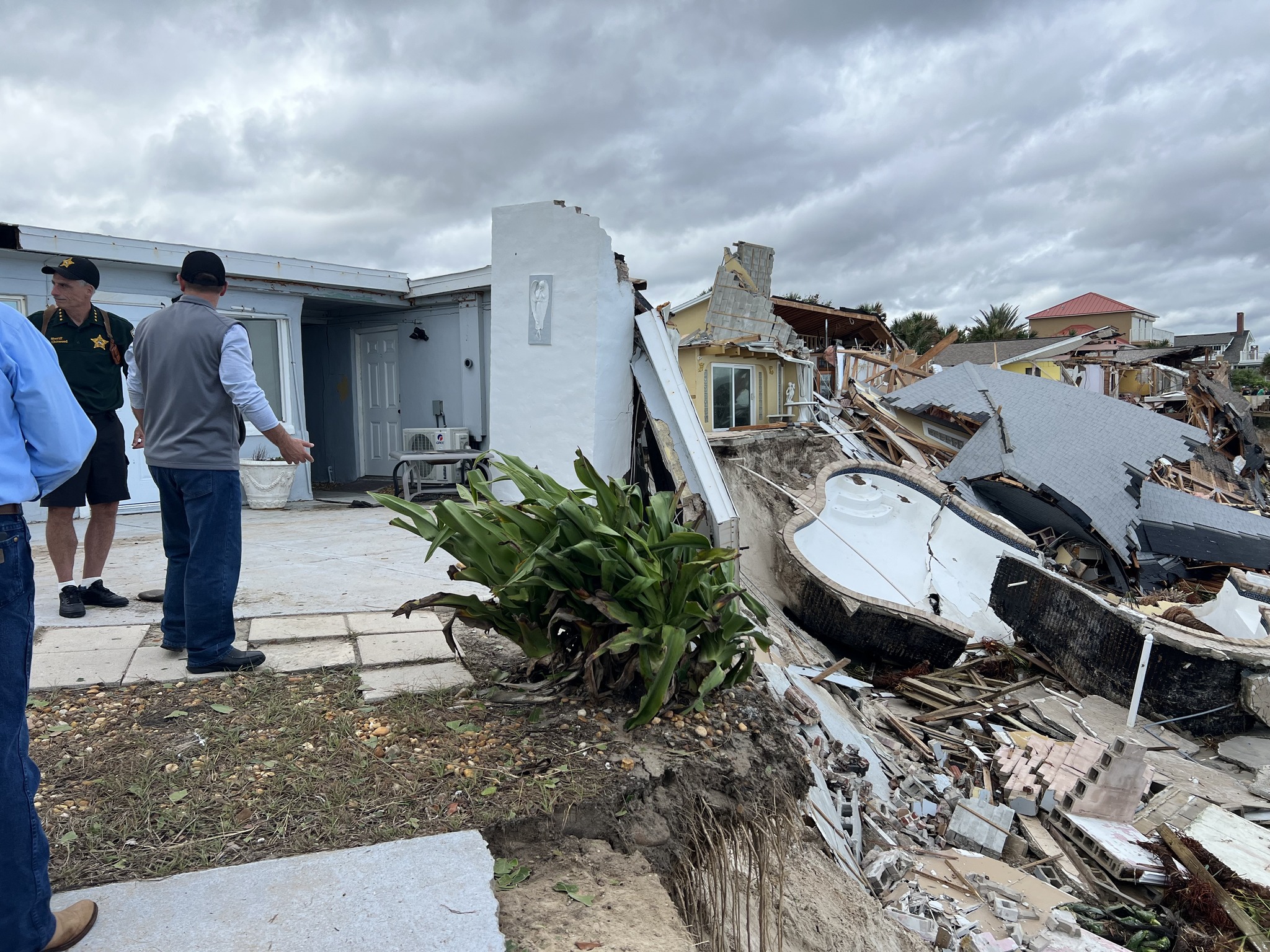
What we’re watching: Weekly disaster update, November 14
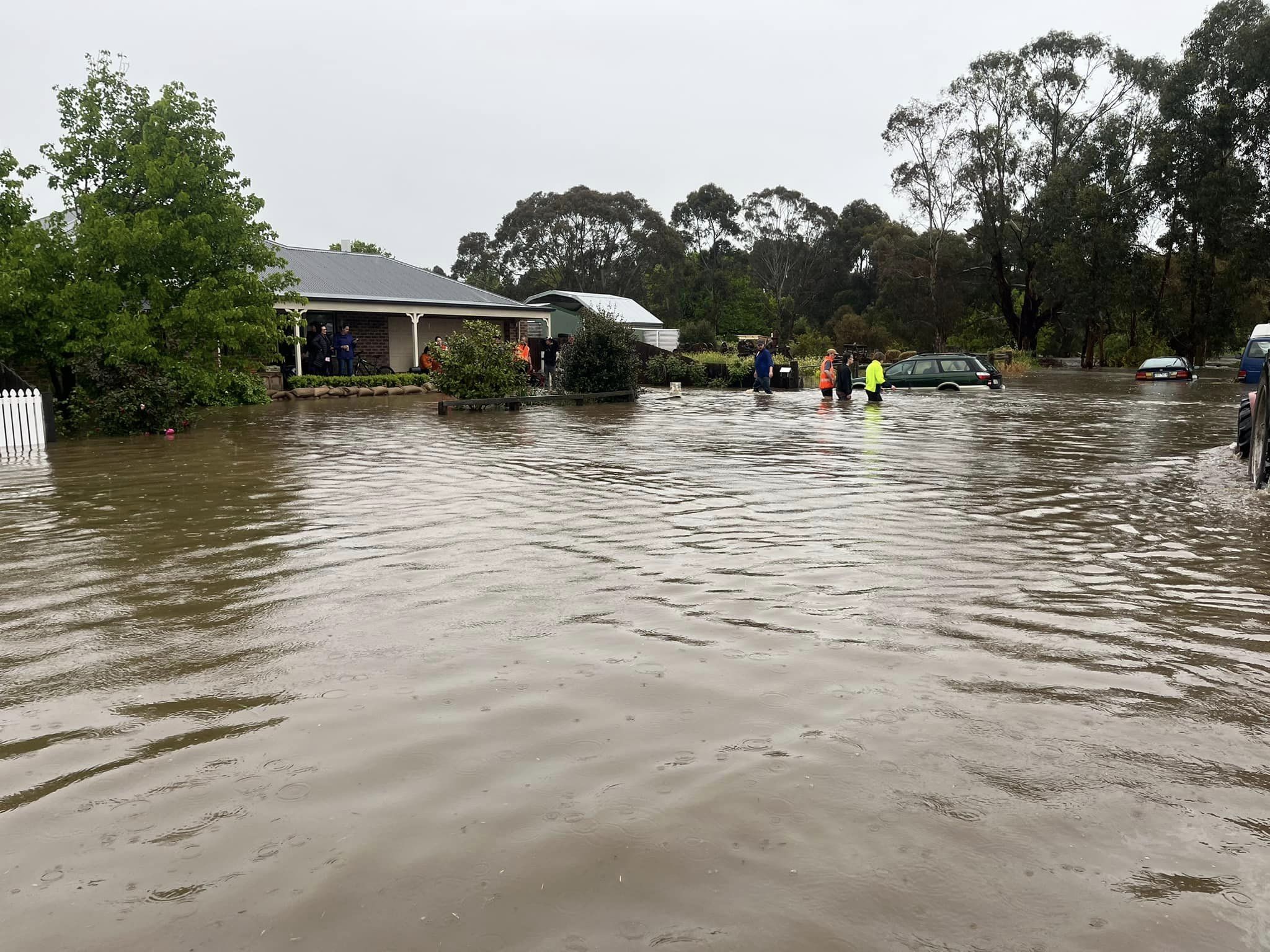
What we’re watching: Weekly disaster update, October 17
Hurricane Ian
Ian became a hurricane in the early hours of Sept. 26 and emerged into the Gulf of Mexico after passing through Cuba, as a Category 3 major hurricane.
According to modeling firm RMS, Hurricane Ian likely caused $53 billion to $74 billion in insured losses from Florida to the Carolinas. Hurricane Ian was the 15th weather event in 2022 to be added to NOAA’s billion-dollar disaster list.
Florida: Ian made landfall in Cayo Costa, Florida on Sept. 28, around 3 p.m. ET. It was a high Category 4, with a windspeed of 150 mph. Ian’s landfall was at the same location where Hurricane Charley made landfall in 2004. Hurricane Ian was so large that the compacted Charley could have fit inside Ian’s eye.
Ian left devastation in its wake with extensive flooding and power outages. The barrier islands of Captiva and Sanibel were disconnected from the mainland after the major Sanibel Causeway was destroyed. There was damage to other bridges and roadways as well, as well as health facilities, schools and water infrastructure.
On Oct. 31, the Florida Medical Examiners Commission said the confirmed death toll was 125 deaths. An NBC News investigation tallied 148 deaths in Florida, with 119 of those deaths caused by the flooding, winds and other dangerous conditions during the storm. A significant number of deaths were attributed to drowning. While the death toll numbers are inexact historically, Ian is likely Florida’s deadliest tropical system since the 1935 Labor Day Hurricane, which killed more than 400 people. However, the number of deaths was significantly lower than anticipated. Most people that died were older adults including at least 30 over 80 years old.
While much of the attention was focused on the state’s west coast, where Ian made landfall, other parts of the state, including central Florida, experienced significant rainfall, flooding and wind damage. It is important for funders to look at all areas of impact, including central Florida, the east coast and small or rural communities. According to a preliminary estimate released by the Florida Department of Agriculture and Consumer Services on Oct. 24, Hurricane Ian caused as much as $1.8 billion in damages to Florida agriculture.
Many Floridians are now homeless. Quickly following the storm, it became clear that the storm would have a broad and lasting impact on the long-term recovery of lower-income people. The state’s popularity, inflation and rising rental costs have made it one of the least affordable places to live in the U.S. Tens of thousands, if not hundreds of thousands, of homes were damaged or destroyed.
South and North Carolina, Virginia: After leaving Florida, the storm made landfall as a Category 1 in South Carolina, near Georgetown, on Sept. 30. The hurricane flooded homes, damaged piers and knocked down trees along parts of the South Carolina coast. Ian weakened into a post-tropical cyclone but still battered North Carolina the weekend of Sept. 30 with rain and strong winds. Thousands of people in the state were without power, and five people died in relation to Ian’s impacts. Ian’s remnants caused flooding around Virginia Beach, Virginia, leading the city to declare a state of emergency on Oct. 2, but the city returned to normal operating procedures on Oct. 4.
Cuba: Prior to landfall in Florida, Ian made landfall in Cuba’s Pinar Del Rio province near the town of La Coloma at 4:30 a.m. EDT on Sept. 27 as a very strong Category 3. This was western Cuba’s first Category 3 hurricane in 14 years. Three people were killed as a result of the hurricane.
More than 77,000 homes were damaged or destroyed in Cuba. In Pinar del Río, 68,370 homes were damaged and 7,664 were destroyed. In Artemisa, at least 9,015 homes were damaged with the majority (7,200) losing some or all of their roof. In Havana, 1,227 homes suffered damage. The power grid went down in western Cuba and then spread across the entire country. The power outage followed a month of rolling blackouts due to a fuel shortage. The country’s main fuel depot was destroyed in August by fire after a lightning strike. This is a good example of how cumulative disasters increase the impact on communities.
The country’s tobacco industry was devastated by the hurricane. France24 reported, “Pilar del Rio produces 65 percent of Cuban tobacco, while Vuelta Abajo is the only region where the three different types of leaves used in the country’s world famous cigars grow. In San Luis alone, 226 tons of tobacco harvested in August was damaged, local television said.”
Cuba is highly dependent upon tourism and tobacco exports. The tourism industry has been suffering since 2020 because of COVID-19 restrictions on travel.
On Oct. 18, the U.S. government announced that it would provide $2 million in aid to Cuba. A statement said that the emergency relief will flow through the U.S. Agency for International Development (USAID) to “trusted, independent organizations operating in the country who have a long presence in hurricane-affected communities.”
Hurricane Fiona
Hurricane Fiona was an extremely long-lasting tropical cyclone that made several landfalls stretching from Guadeloupe to Newfoundland. The most significant impacts were in Atlantic Canada and Puerto Rico: six days and over 2,400 miles apart.
Puerto Rico: Hurricane Fiona made landfall as a Category 1 storm at 3:20 p.m. ET on Sept. 18, near Punta Tocon on the southwestern coast of Puerto Rico. A slow-moving storm with wind speed of 85 miles per hour, the high rainfall caused rivers to rise higher than during Hurricane Maria (2017).
The storm cut power to all the island’s nearly 1.5 million electrical consumers. Hundreds of thousands also lost access to water service. Even before Fiona, there was widespread discontent with LUMA Energy, the company that operates Puerto Rico’s power infrastructure.
According to Puerto Rico’s Department of Health, at least 22 people died due to Fiona, with another 20 deaths under investigation as of Dec. 29, 2022. After Hurricane Maria, there were many challenges in getting the government to release an accurate count of storm-related deaths, which include those that occurred directly in the hurricane and those that occurred in the aftermath.
President Joe Biden visited Puerto Rico on Oct. 3, promising $60 million to help coastal areas prepare for future storms. The funding will come from the bipartisan infrastructure law that passed last fall.
Fiona made landfall on the anniversary of Hurricane Hugo (1989) and just a few days before the anniversary of Hurricane Maria (2017). Prior to Fiona, more than 3,000 homes still had blue tarps on the roofs because of damage from Hurricane Maria.
Around Puerto Rico, community networks stepped in to respond to needs after Hurricane Fiona, often before any government action. According to some local leaders, the U.S. government’s struggles to implement an effective and timely emergency plan since Hurricane Maria meant “people end up fending for themselves.”
Canada: Hurricane Fiona passed directly over parts of Atlantic Canada on Sept. 24, leaving significant damage in its wake. According to the Canadian Hurricane Centre, Fiona was the lowest-pressure storm to make landfall in Canada. The storm wreaked havoc on Canada’s farming, fishing and fish processing industries, destroying crop land, boats, harbors and fish processing plants.
Hardest hit was the town of Port aux Basques, Newfoundland, the island province’s main connection to the rest of the country, where at least a dozen homes were washed out to sea. More than 200 homes were damaged, according to a spokeswoman for the Royal Canadian Mounted Police. At least two people were killed, including a 73-year-old woman who was swept away by the water.
Fiona made landfall in Guadeloupe on Sept. 16, with one death reported in Basse-Terre after a house was swept away by water with the resident inside. The capital was inundated with flooding and there were significant infrastructure losses.
After leaving Puerto Rico, Fiona moved through the Caribbean making landfall in the Dominican Republic on Sept. 19 and then passing close to Turks and Caicos, before moving up past Bermuda as a powerful Category 4 hurricane on Sept. 23. Fiona was the first hurricane since Ivan (2004) to make landfall in the Dominican Republic, leaving at least 800 people displaced with over 50 homes reported as damaged and two deaths. Officials in the Turks and Caicos and in Bermuda said despite telecommunication and power outages there was no major damage in either location.
Hurricane Nicole
Nicole made landfall as a Category 1 hurricane on the east coast of Florida on North Hutchinson Island just south of Vero Beach in the early morning hours of Nov. 10. Nicole’s sustained winds were 75 miles per hour.
As of Nov. 11, the storm caused the deaths of at least five people, including two people in Orange County who were killed after being electrocuted by a downed power line. It is extremely rare for a hurricane to make landfall on the U.S. mainland in November. According to Senior Meteorologist Jonathan Erdman, there have been just three mainland U.S. hurricane landfalls in the month of November and Nicole is the first in 37 years.
By mid-morning on Nov. 10, Nicole had weakened to a tropical storm. Nicole’s large wind field meant that tropical storm-force winds extended to the west, north and east of the storm’s center, including much of the Florida Peninsula, coastal Georgia and coastal South Carolina. Nicole’s strong winds, rainfall and storm surge affected some areas hit in September by Hurricane Ian.
Significant flooding was reported along the St. Johns River in northeast Florida. The bay front in St. Augustine was completely underwater the morning of Nov. 10. Nicole brought above-average rainfall across most of the St. Johns River Water Management District’s 18-county region. Most areas around Tampa received about 2 to 4 inches of rainfall, with some totals closer to 5 inches. A tide gauge at Port Canaveral recorded up to 3.6 feet of inundation above normal high tide on Nov. 10. Widespread coastal flooding and significant beach erosion was reported along nearly all of Florida’s Atlantic coast.
Damages included homes and other buildings falling into the ocean in Volusia County. Dramatic footage showed home damage in Daytona Beach Shores as well.
In Volusia County, at least 49 beachfront properties, including hotels and condos, were deemed “unsafe.” According to Volusia County Manager George Recktenwald, “The structural damage along our coastline is unprecedented.” Hurricane Nicole caused $522 million in damage in Volusia County alone.
One factor contributing to dangerous conditions along the coast was Nicole’s storm surge, which peaked at around six feet the morning of Nov. 10. This is significant due to the very large size of the storm as it approached Florida on Nov. 9. Another contributing factor was that sea level in the affected part of Florida has risen more than a foot in the past 100 years.
Even after it weakened, Nicole still posed a danger. On Nov. 11, more than 20 million people were under wind alerts from Georgia into the Carolinas. Remnants of Nicole soaked the U.S. East Coast over the weekend of Nov. 12-13 and also brought heavy rainfall to much of southern Quebec and Atlantic Canada.
Hurricane Lisa
Hurricane Lisa made landfall along the coast of Belize on Nov. 2 as a Category 1 tropical cyclone. The 12th named system of the 2022 season, Lisa became the sixth hurricane of the year. Lisa made landfall near the mouth of the Sibun River, about 10 miles southwest of Belize City, at approximately 4:20 p.m. CDT.
Many residents in Belize were forced to take shelter from winds and the threat of flooding. The primary concern was flooding rather than wind damage, with Belize receiving up to 10 inches of rainfall in some parts of the country. The storm surge pushed waters up to four to seven feet above normally dry land and engulfed many parts of Belize City.
The country’s National Emergency Management Organization estimated around 172,000 people were affected, close to 39% of the country’s population. No fatalities were reported, but 500 houses were reported as destroyed, with an additional 5,000 homes damaged.
The impacts on the agriculture sector in Belize were further compounded by Tropical Storm Julia in October 2022, which resulted in the loss of approximately 2,500 acres of agricultural products.
By late morning on Nov. 3, Lisa had weakened to a tropical depression over Mexico.
Minor storms
Housing
Many people struggle to find safe and affordable housing following a hurricane, particularly those from poor and marginalized backgrounds. For example, Hurricane Ida exacerbated an affordable housing crisis in New Orleans as the housing supply post-disaster was low, but demand was high. This is even more true after Hurricanes Fiona and Ian.
Houses that are only partially damaged may need to have mucking and gutting done, clean-up and tarping of roofs.
Housing prices in southern Florida have been increasing, limiting the ability of renters and people living in poverty to find housing. Florida was already experiencing a housing crunch before the hurricane, which will make a recovery hardest on people already struggling to make ends meet. Numerous insurance companies have closed and therefore, finding new insurance after a storm may be even more difficult.
Linked to this are income support programs. Many of the damaged homes were among low and middle income residents and/or retirees on fixed incomes. Renters are often subjected to unfair evictions after disasters, as landlords realize they can increase rents due to the shortages. Wealthier homeowners likely have insurance that will also allow them to rent temporary housing during repairs, further restricting the rental market.
Mobile and manufactured homes
While housing overall will be a significant need, there are hundreds of thousands of mobile homes in Florida. In Manatee County, the most damage was found in manufactured housing.
Before Hurricane Ian, there were 1,200 mobile home developments along Southwest Florida’s coastline. According to NPR, “Of 822,000 mobile and manufactured homes in the state, almost two-thirds of them are pre-1994 vintage.” Hurricane Andrew’s impact on mobile and manufactured homes was so significant that the federal government tightened the wind standards just two years later. In Park Hill Estates in Punta Gorda, the homes are all build to post-1994 standards because they were destroyed during 2004’s Hurricane Charley. As a result, 99% of the homes made it through the storm, with the occasional siding, skirting or roof damage.
CDP hosted a webinar on Oct. 13, 2022, on mobile housing during disasters that offers advice for funders on supporting these communities.
Economic and community development
The compounding effects of COVID-19 delayed recovery from storms in 2021. Livelihoods support and investing in local economies will be needed for people to recover fully. The extensive power outages led to increased costs for individuals and businesses alike. Florida and Puerto Rico are strong tourist destinations, and the storms have significantly impacted future revenue.
Health and behavioral health
Research shows that hurricanes cause and exacerbate multiple diseases. While many health impacts peak within six months following hurricanes, chronic diseases continue to occur for years. Hurricanes also inflict harm to the mental health of people in their paths.
At least three suicides and one murder were linked to Hurricane Ian in Florida. These numbers are likely to increase as people realize they are not going to be able to rebuild or suffer additional impacts from the storm including loss of family and friends (due to death or displacement), loss of income, loss of housing, etc. Two of the suicides were linked to men in their 70s who saw the destruction of their housing and could not cope.
For Fiona, there was a high rate of pre-existing disability in Puerto Rico. According to the most recent data from the 2019 American Community Survey the prevalence of disabilities was:
- 21.7% for persons of all ages
- 0.8% for persons ages 4 and under
- 11.7% for persons ages 5 to 15
- 9.1% for persons ages 16 to 20
- 16.6% for persons ages 21 to 64
- 37% for persons ages 65 to 74
- 61.9% for persons ages 75+
Residents are unable to access federal disability income support benefits, so many disabled residents live in poverty on the island. Additional health care support will be needed to assist this population with recovery (as well as additional resources to rebuild, as their disability may limit their own participation in the reconstruction).
Government recovery assistance
Once again, infrastructure spending will be an important area. While the federal government has promised to support recovery for U.S.-based disasters, there is still a 25% cost-share that some local governments may have issues funding. In other countries, there may not be the structural funding programs that the U.S. has in place. That is one area that philanthropy can be of assistance with infrastructure spending.
Technical assistance and oversight from philanthropy may also be helpful. As of August 2022, Puerto Rico had only spent 19% ($5.3 billion) of the post-Maria (and Irma) recovery dollars funded by FEMA for 2017. Most of that money – about 81% – went towards debris removal and other emergency response measures. Road and utility repairs remain undone.
Navigating assistance processes
Disaster assistance may be available in various forms and from different sources. People will need help navigating a complicated assistance process, particularly undocumented people and people whose first language is not English.
A recently released study from the U.S. Commission on Human Rights found that FEMA did not equitably serve at-risk populations including people with disabilities, people living in poverty and English as a second language speakers during Hurricanes Harvey or Maria in 2017.
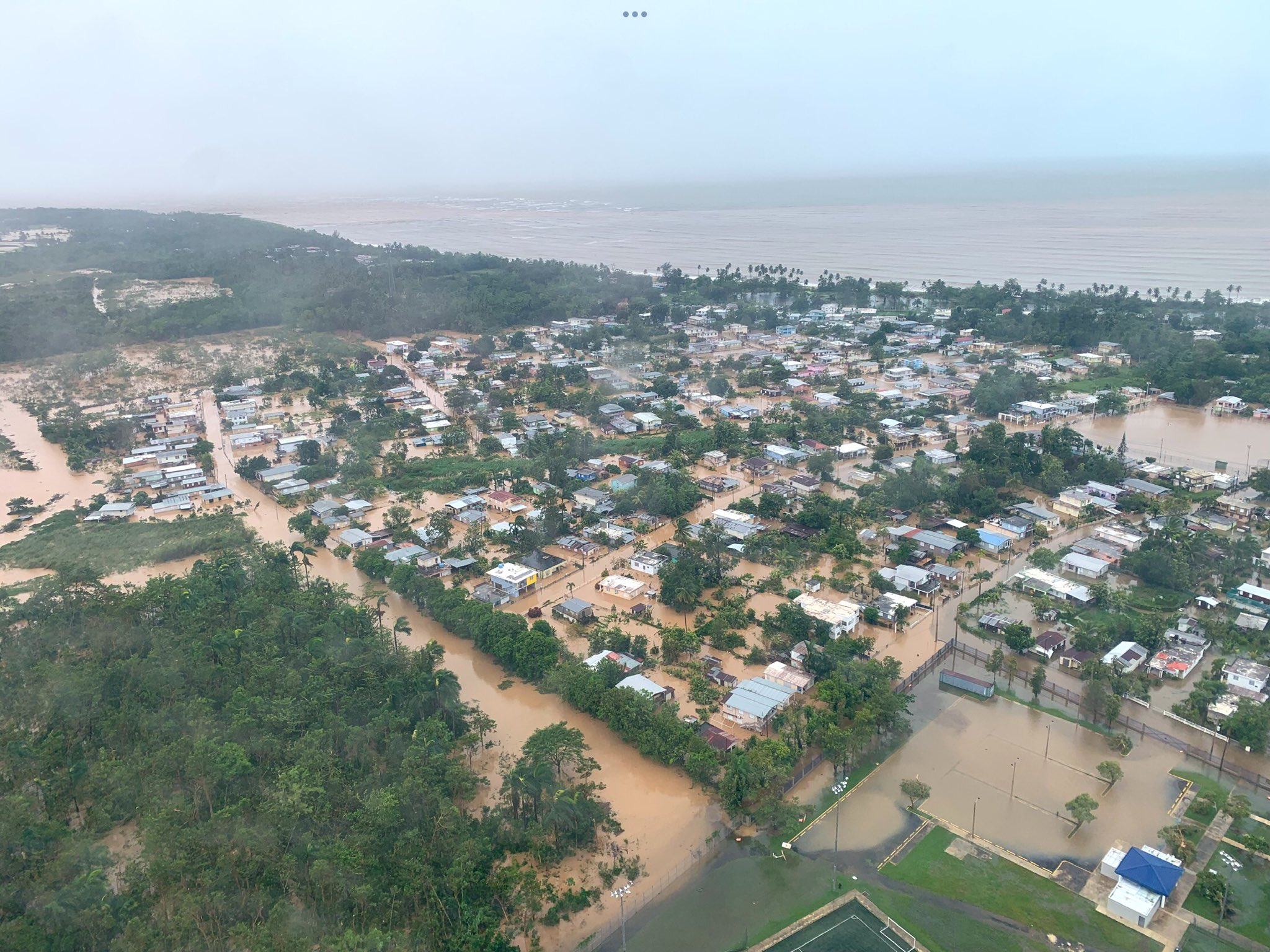
The CDP Atlantic Hurricane Season Recovery Fund is now a perpetual fund, allowing CDP the most flexibility to respond to philanthropic and humanitarian needs as they arise. You can give to the fund to support recovery.
Contact CDP
Philanthropic contributions
If you would like to make a gift to the CDP Atlantic Hurricane Season Recovery Fund, please contact development.
(Photo: Flooding from Hurricane Fiona in Puerto Rico. Credit: CBP AMO Regional Director SE via Twitter)
Recovery updates
If you are a responding NGO or a donor, please send updates on how you are working on recovery from this disaster to Tanya Gulliver-Garcia.
We welcome the republication of our content. Please credit the Center for Disaster Philanthropy.
Donor recommendations
If you are a donor looking for recommendations on how to help with disaster recovery, please email Regine A. Webster.
Philanthropic and government support
In 2020, the Center for Disaster Philanthropy (CDP) removed the “annual” designation from its Atlantic Hurricane Season Recovery Fund to allow a broader focus on the full spectrum of the disaster cycle.
The following are examples of grants awarded through this fund:
- CDP awarded $50,000 to Culture Aid NOLA in 2022 to support “July Supply,” an event aimed at preparing the families of New Orleans for the coming most-active months of the season hurricane season.
- SBP received a $150,000 grant in 2021 to support their SHARE program and serve at least nine vulnerable families in southwest Louisiana by rebuilding homes damaged or destroyed by Hurricanes Laura and Sally, thus shrinking the time between disaster and their recovery. SBP will leverage CDP’s support against other funding sources and community resources to serve families through its rebuilding program and SHARE grant program administered by SBP that distributes per-project gap funding to nonprofit rebuilding partners active in the area. The Fuller Center for Housing and All Hands and Hearts received $50,000 each from SBP via this grant to support their work. SBP will be implementing its SHARE program again in response to Hurricane Ida.
- GER3 (Global Emergency Relief, Recovery and Reconstruction) received a $50,000 grant in partnership with Google to provide critical recovery services to highly vulnerable and severely affected communities in the North Zone of Honduras following Hurricanes Eta and Iota, with the potential transition into reconstruction efforts. With the aim of removing debris and cleaning 200+ structures across two communities, the community-led project approach will integrate local team members and cash-for-work opportunities while focusing on building back better, increasing sustainability and resiliency.
Hurricane Ian:
- In Florida, an emergency declaration (EM-3584) was issued on Sept. 23. A disaster declaration (DR-4673) was announced after landfall. FEMA approved 368,480 Individual Assistance applications for $871,257,134 as of Jan. 9, 2023. On Sept. 30, a disaster declaration (DR-4675) was announced for the Seminole Tribe of Florida. As of Dec. 22, FEMA had approved nine Individual Assistance applications for $17,410.
- In North Carolina, an emergency declaration (EM-3586) was issued on Oct. 1. As of Dec. 30, more than $1.32 million in total public assistance grant dollars were obligated.
- In South Carolina, an emergency declaration (EM-3585) was issued on Sept. 25. A disaster declaration (DR-4677) was announced on Nov. 21. FEMA approved 949 Individual Assistance applications for $1,929,270 as of Jan. 9, 2023.
Hurricane Fiona:
- In Puerto Rico, an emergency declaration (EM-3583) was issued on Sept. 18. A disaster declaration (DR-4671) was announced on Sept. 21. FEMA approved 723,005 Individual Assistance applications for $593,995,487 as of Jan. 9, 2023. More than $92.38 million in public assistance grant dollars were obligated.
Hurricane Nicole:
- On Nov. 9, President Biden approved an emergency declaration for Florida. On Nov. 10, Florida Governor Ron DeSantis declared a state of emergency covering all 67 Florida counties. On Dec. 13, a disaster declaration (DR-4680) was issued designating six counties for Individual Assistance and Public Assistance for many counties. As of Jan. 11, 2023, 527 Individual Assistance applications were approved for $2,390,778.
In France, President Emmanuel Macron recognized a state of disaster for Guadeloupe and opened a special relief fund.
In Canada, the federal and provincial governments said they would support people and businesses who did not have sufficient insurance or were considered to be uninsurable by insurance companies. On Oct. 4, Prime Minister Justin Trudeau announced a $300 million recovery fund for Atlantic Canadians.
Fund resources
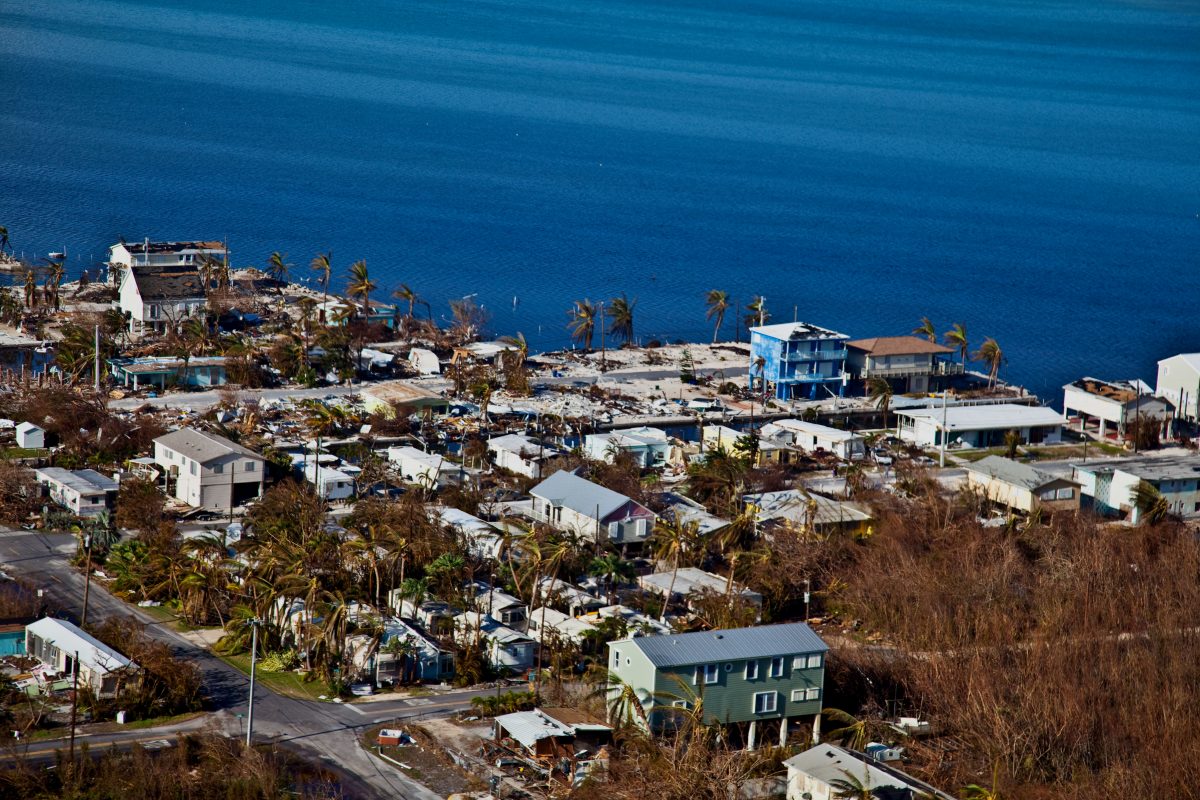
Hurricanes, Typhoons and Cyclones
Tropical cyclones (also known as hurricanes and typhoons) pose significant global threats to life and property, bringing a variety of hazards, including storm surges, flooding, extreme winds and tornadoes. Funders can intervene to reduce harm to people and property, before, during and after storms.
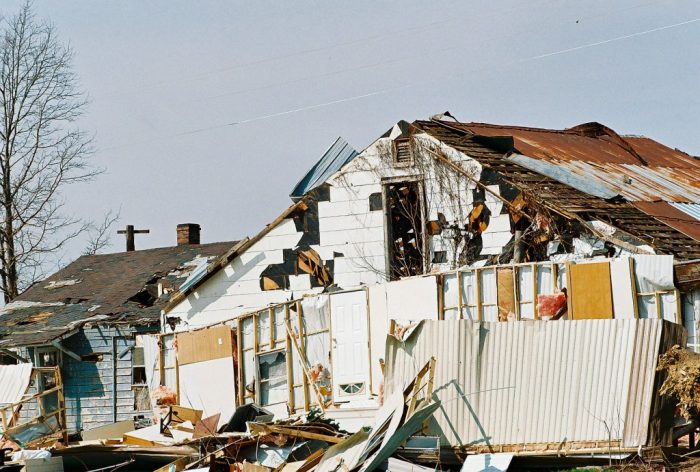
Insurance
Each natural disaster reminds us of the value of insurance to protect our homes and businesses. But with the news filled with stories about homeowners still waiting to settle claims, or insurance covering less damage than expected, what is the role of private insurance in disaster recovery?
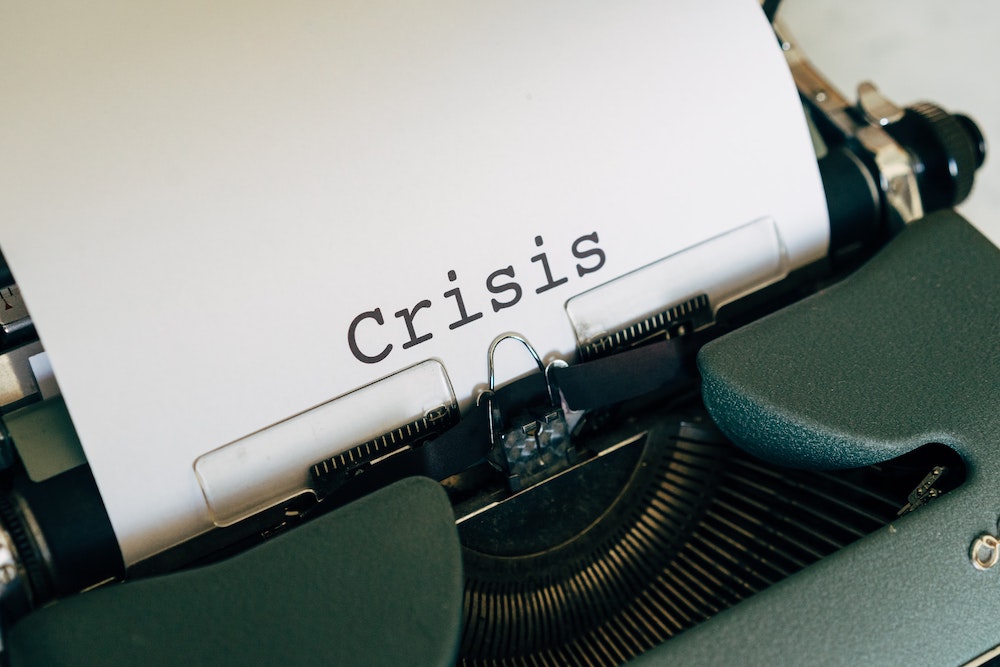
Crisis Communications
When a disaster strikes, a crisis communications plan that uses the six pillars of crisis communications will allow staff to communicate clearly, concisely and in ways that match your organization’s and community’s needs.